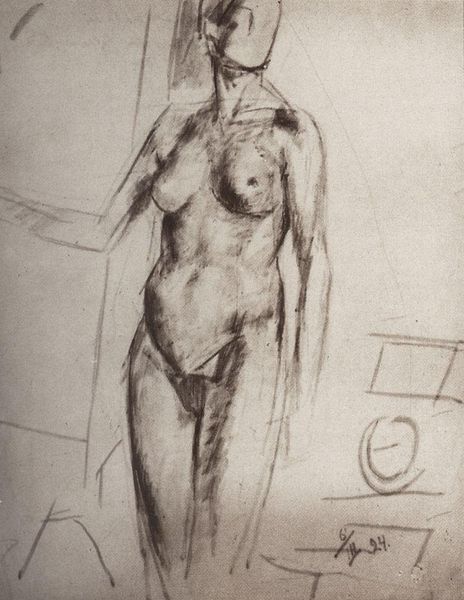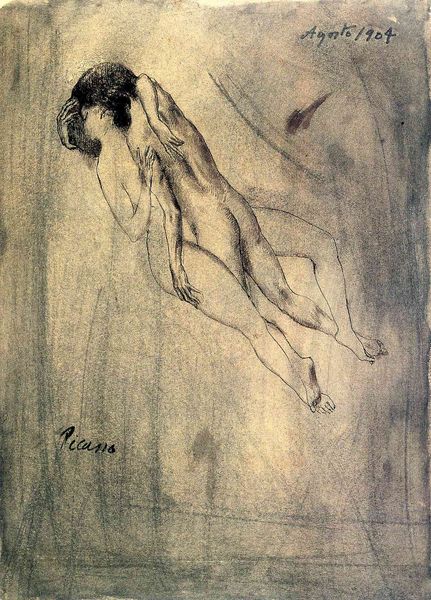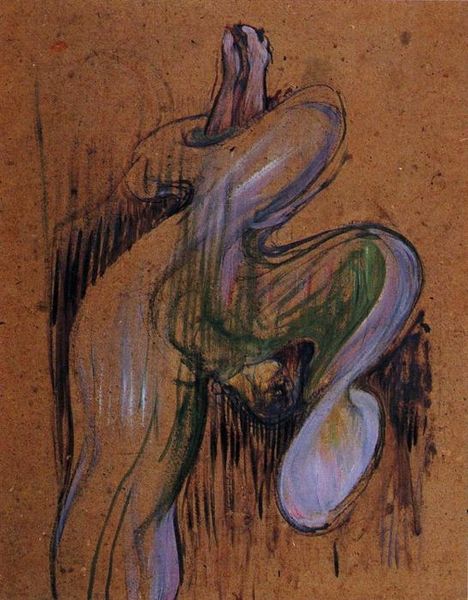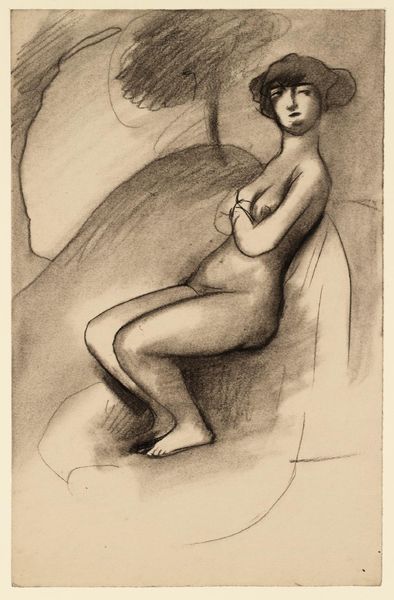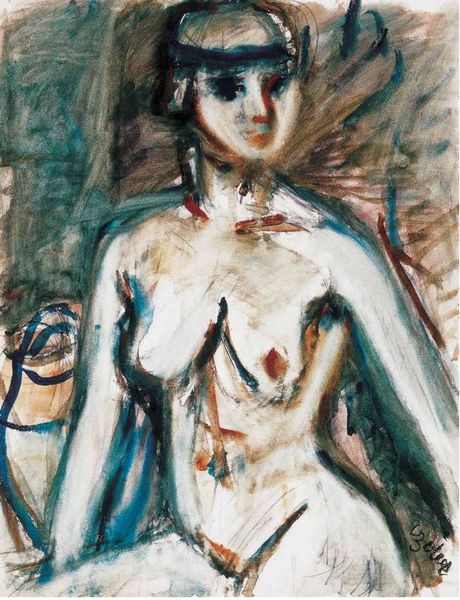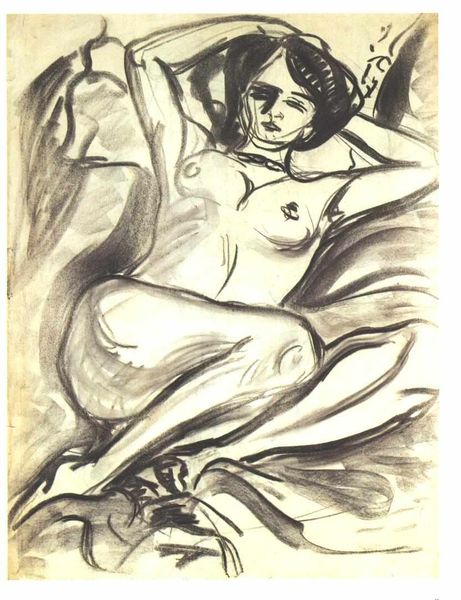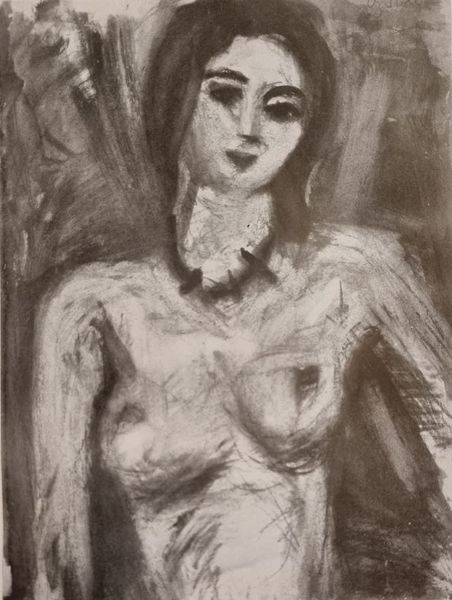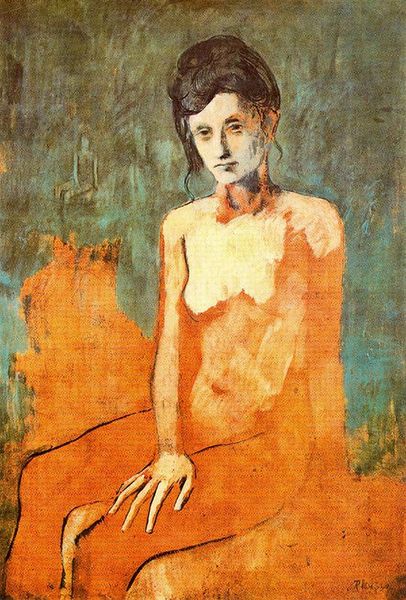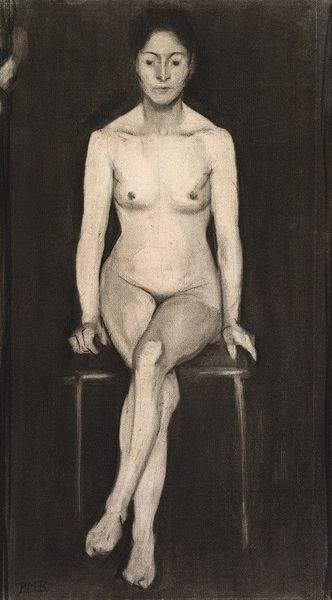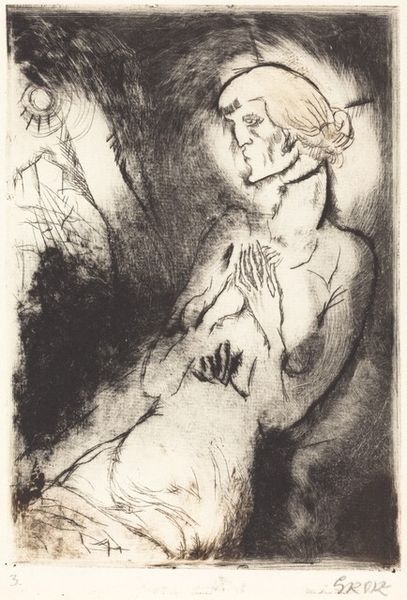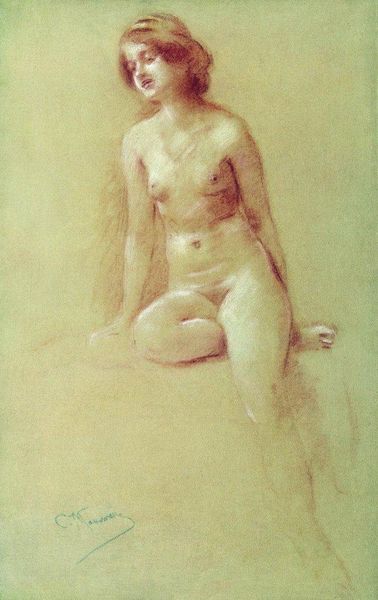
drawing, pencil
#
drawing
#
pencil sketch
#
pencil drawing
#
pencil
#
symbolism
#
nude
#
erotic-art
Copyright: Public domain
Curator: Felicien Rops crafted this pencil drawing, titled "The Best Love of Don Juan," in 1879. What are your initial thoughts on the work? Editor: It's stark. The vulnerable pose of the figure, coupled with that looming presence behind her, speaks of power imbalances and perhaps even exploitation, typical for the themes of the era. Curator: Observe how Rops uses the pencil. The textures are varied, from smooth skin tones to the almost violently scribbled shadow encompassing Don Juan's figure. The lines are confident and sure, particularly in capturing the female nude. Editor: Precisely. The rendering of her body, while technically proficient, feels clinical. The almost detached way her nudity is presented begs the question: is this an exploration of female sexuality or another example of the male gaze objectifying women? Consider, also, Don Juan, a figure that can signify lust and domination, as this might illuminate a certain critique. Curator: But what about the spatial relationship? Don Juan’s figure exists almost as a specter. He is there, but blurred and indistinct, dominating her space without truly occupying it in a material sense. Editor: That spatial ambiguity further emphasizes the power dynamics at play. Don Juan looms—an ever-present threat to her autonomy, not truly tangible but impactful all the same. His presence casts a shadow both literally and figuratively, hinting at the societal structures of oppression at that time, making a comment on how one exploits a marginalized other. The male gaze. Curator: Perhaps Rops invites the viewer to analyze such things and ponder about relationships of men and women? The composition makes her so present to us as an object, not in the place that one has power. And there is an artful, aesthetic beauty nonetheless to this work. Editor: Definitely! His choice to use pencil—a medium so accessible and immediate—heightens the intimacy and intensifies that critical tension. The image can function as a poignant visual commentary on patriarchal structures of exploitation and how women in the late 19th century could face marginalization or even victimization. Curator: The sharp execution allows for complexity as well. What seems objectifying could function in different perspectives and discourses. It brings the best, or rather, worst of male desires out in its technical mastery, too. It offers such food for thought on many levels. Editor: True! It really encapsulates much about social attitudes and what underpinned societal power then, and to an extent still exists today, which is thought provoking indeed.
Comments
No comments
Be the first to comment and join the conversation on the ultimate creative platform.

